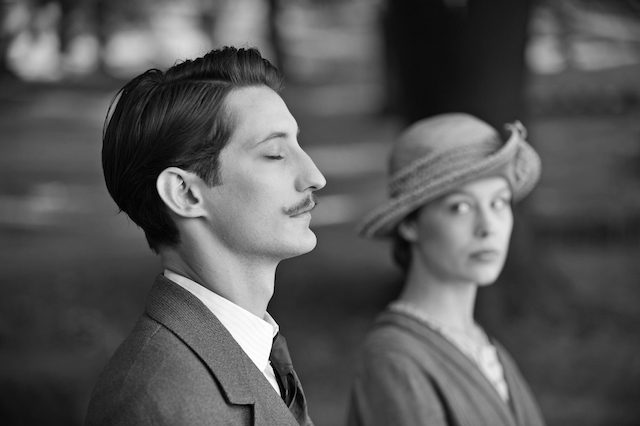‘Touched with Fire’ When it begins “Touched with Fire” looks like a dreaded actors’ showcase — the type where thespians show off their best approximation of being mentally ill. Perhaps worse, it stars Katie Holmes, who hasn’t always taken to demanding roles. As Carla, a young poet who was hit with bipolar disorder during her college years, Holmes kicks the movie off in full gesticulating Intense Actor mode. Typical of its opening stretch is a scene where she bulges her eyes through a spoken word performance that encourages a sea of snickers, all while writer-director Paul Dalio films her with a disorienting wide-angle lens. Holmes’ co-star, Luke Kirby, plays Marco, condemned with the same affliction and prone to ranting about escaping “the whole manmade system,” sometimes while rapping. RELATED: Review: “Mountains May Depart” is Jia Zhangke’s sneaky, ambitious melodrama It doesn’t take long for the film to calm down, and for Holmes and Kirby (and Dalio’s filmmaking) to wind up in service of the story, not themselves. It becomes a tale of love, and the kind where two people form a conjoined unit, deluding themselves into thinking their questionable, possibly harmful actions are for the good. Both wind up locked away in the same institution, where bickering inevitably leads to late-night bonding sessions over the plus side of being manic. Marco convinces her to embrace her illness, pointing to the great artists (Van Gogh, Lord Byron, etc.) whose work came from being manic. He shows her X-rays of bipolar brains, where the entire organ is lit up like a Christmas tree, unlike the normals who trudge through life without the fire of perhaps divine inspiration. They’re bad for each other, stoking one another’s extremes. But despite at one point trotting out real-life clinical psychologist Kay Redfield Jamison, who wrote the non-fiction book that inspired the film’s title, the film isn’t a simple message movie about taking your meds. It captures both sides of the disease: the scariness of losing control and the joys of expanding one’s consciousness, especially when you have a partner with the same condition. It entertains the notion that it can be frightening and liberating. At heart it’s a movie about lovers forming a bubble from the outside world. It even references one of the great films on the subject, Jean-Luc Godard’s “Pierrot le Fou,” complete with a stretch where our heroes hit the road and whimsically drive their car into a body of water. RELATED: New on Netflix: “I Love You Phillip Morris” shows Jim Carrey having a gay old time Dalio, who was encouraged by his former NYU professor Spike Lee (who executive produced) to make a film based on his own experiences, tries to find a balance between letting his two very good leads go and matching their enthusiasm with florid filmmaking. The camera glides around them or soaks in radiant, psychedelic colors, including our heroes’ love of painting walls in renditions of Van Gogh’s “Starry Night,” which Marco purports to be how the painter saw the sky at the height of his mania. (When they see the real deal, enclosed in a relatively tiny frame, they can’t help but be disappointed.) Dalio tries to hold onto the film as it turns melodramatic in its final stretch. Their decision to move in together, while agreeing to being dosed up, ends disastrously, including with an over-the-top confrontation involving a party with their worried parents (including Christine Lahti and Griffin Dunne). Dalio doesn’t quite succeed, but when his film is cooking it asks necessary questions about mental illness while capturing, better than most films, the feeling lovers have when the only thing they want in the world is each other.
Director: Paul Dalio
Stars: Katie Holmes, Luke Kirby
Rating: R
3 (out of 5) Globes
‘Touched with Fire’ is not your typical film about mental illness

Roadside Attractions
Follow Matt Prigge on Twitter @mattprigge

















